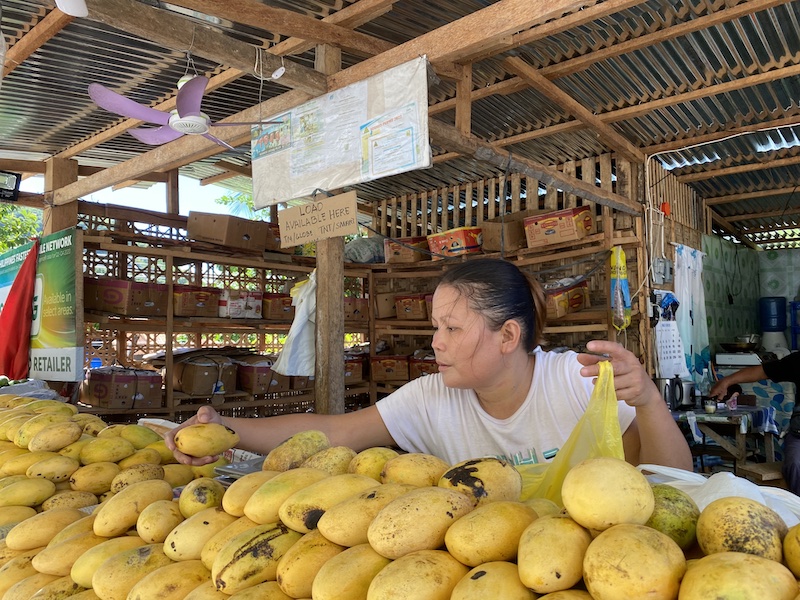DAVAO CITY (MindaNews / 27 January)—The mango industry in Mindanao needs to improve farm practices—like minimizing use of pesticides—to tap into the New Zealand market.

Mindanao Business Council (MBC) chair Vicente T. Lao, said during the Kapihan sa PIA (Philippine Information Agency) on Friday that while mangoes from Mindanao are considered among the best fruits in the country that can be exported to the international markets, there are still “industry practices” that could discourage potential international buyers.
Lao, who is also New Zealand’s Honorary Consul in Mindanao, said that the use of pesticides beyond acceptable limits could result in the exporters’ failure to meet the standards of foreign buyers, encouraging a major paradigm shift among industry stakeholders to produce mangoes for export.
“You very well know that in the Philippines, the mango industry is controlled by the sprayers because that’s the way the industry is being used in the Philippines… There has to be a shift in the paradigm if we want to produce mangoes for export,” Lao said.
He added that sprayers would apply more pesticides on mango trees to get more yield to increase their profits.
As an industry practice, he said sprayers get 70% share of the profits while the farm owners, 30%.
“When they start spraying, they do not consider the minimum residue levels that we need to pass to be able to export good quality products so we get into trouble, so fruits will not be able to be exported and end up in the domestic market. I’m not saying that this is bad but farmers should be entitled to the best price,” he said.
Lao said farm owners should be given the opportunity to export mangoes.
He noted that New Zealand has a big market for mangos.
Lao claimed that the global market for mango is bigger compared with banana, pineapples, papaya, and durian, which are among the fruit crops that the Philippines has been exporting to several international markets.
“We are very strong in bananas, pineapples, and even papaya. Currently, we are improving on durian but mango is a far bigger market compared to all of those exotic fruits that we have,” he pointed out.
According to the Philippine Statistics Authority, Zamboanga Peninsula produced the highest yield of mangos as of 2022 with 71,835.18 metric tons, followed by Soccsksargen with 60,174.16 MT, Northern Mindanao with 52,401.69 MT, Davao Region with 44,813.70 MT, Caraga Region with 17,852 MT, and Bangsamoro Autonomous Region in Muslim Mindanao with 15,817.23 MT.
New Zealand Ambassador Peter Kell added that the his government has supported initiatives to develop the mango industry in Mindanao by helping farmers improve the quality of their produce.
“If you’re interested in exporting, the flip side is you have to improve your quality to be export ready,” he said.
He added that New Zealand-based Plant & Food Research is helping Mindanawon mango farmers by setting up laboratories and facilities in Midsayap in Cotabato province.
According to its website, the firm signed a US$150,000 two-year contract to help the Philippines “deal with pesticide residue and compliance with other agricultural practices.”
It said that the project seeks to develop “high-quality export spray program for mango, improve chemical application and supply chain quality assurance, and increase the pack out of high-quality mango.” (Antonio L. Colina IV / MindaNews)







